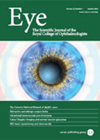You searched for "Lucentis"
Conference Report: Scottish Ophthalmological Club Spring 2025 Meeting
The biannual Scottish Ophthalmological Club (SOC) meeting took place on 21 February 2025 in the rolling hills of Stirling at the Stirling Court Hotel. Kindly hosted by NHS Forth Valley, the free paper session commenced after a cordial opening message...Trends in Ophthalmology Meeting 2023
2 March 2023
-3 March 2023
The chill of an early spring day was warmed by the buzz of excitement as nearly 150 attendees arrived in central London for the first face-to-face annual Trends in Ophthalmology meeting since the pandemic. Chaired by Ms Susie Morley, attendees...
How the other half live – ophthalmology training around the world
5 August 2020
| Hari Kaneshayogan
|
EYE - Cataract, EYE - Refractive, EYE - Vitreo-Retinal, EYE - Cornea, EYE - General
Ophthalmology speciality training is currently seven years in the UK without an additional fellowship. UK trainees are privileged to have a training programme that is held in high esteem across the world, but did you ever wonder what other trainees...
Ocular manifestations of multiple sclerosis: an overview
Multiple sclerosis (MS) is an autoimmune demyelinating disease of the central nervous system (CNS), in which there is dissemination of lesions in time (two or more clinical events) and space (multiple lesions seen on brain and spinal imaging). The pathophysiology...Management of giant retinal tears with vitrectomy and perfluorocarbon liquid postoperatively as a short-term tamponade
1 April 2018
| Saruban Pasu
|
EYE - Vitreo-Retinal
The authors report an eight year retrospective case series study of 30 eyes of 29 patients with who underwent a giant retinal tear-related retinal detachment repair. M: F ratio was 23:6. Right to left eye ratio was 16:14. The mean...
End stage glaucoma management
1 August 2014
| Yajati K Ghosh
|
EYE - Glaucoma
A 48-year-old female has had multiple drug treatment for glaucoma and is still losing field of vision. How do you manage this over time? This patient is at high-risk for going blind and should be managed aggressively to protect remaining...
Systemic sarcoidosis presenting with acute myopia and angle closure
1 June 2016
| Naser Ali, Sher Aslam
|
EYE - Cataract, EYE - Cornea, EYE - General, EYE - Glaucoma, EYE - Imaging, EYE - Neuro-ophthalmology, EYE - Oculoplastic, EYE - Oncology, EYE - Orbit, EYE - Paediatrics, EYE - Pathology, EYE - Strabismus, EYE - Refractive, EYE - Vitreo-Retinal
Case report A 40-year-old Asian man presented to the Emergency Department with a one day history of sudden onset visual disturbance in his right eye. He complained of image distortion and noted that objects now appeared smaller. He also described...
Herpes zoster ophthalmicus: a clinician’s perspective
25 January 2023
| Anitha Priya Arun Shankar, A. R. Reddy
|
EYE - General
Introduction Herpes zoster, commonly known as shingles, is caused by the reactivation of varicella zoster virus (VZV). The term herpes is derived from a Greek work, herpein, which means ‘creeping’ and the word zoster means a belt or a girdle...
Ocular electrophysiology
A 34-year-old woman, who is a CEO in a multinational firm, has been losing vision over the last 12 months. She has seen her opticians, who initially tried different glasses but could not improve things. Clinical examination is unremarkable. How...Insects, swelling and sight loss: a case of orbital inflammatory syndrome
1 June 2022
| Parushak Rezai, Susan Sarangapani
|
EYE - General
Despite being the most common cause of painful orbital mass in adults and the third most common orbital disease, orbital inflammatory syndrome still proves to be a difficult ocular condition to diagnose, treat, and manage. A 41-year-old lady presented to...




